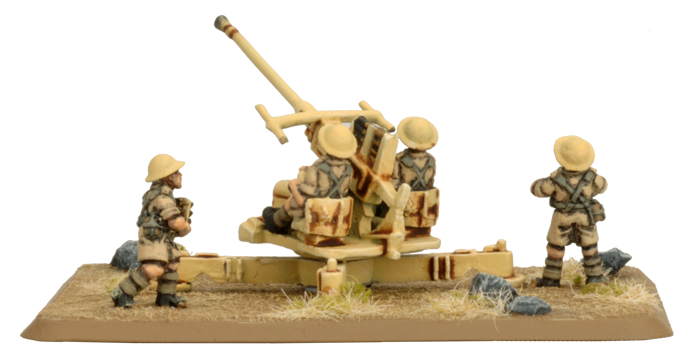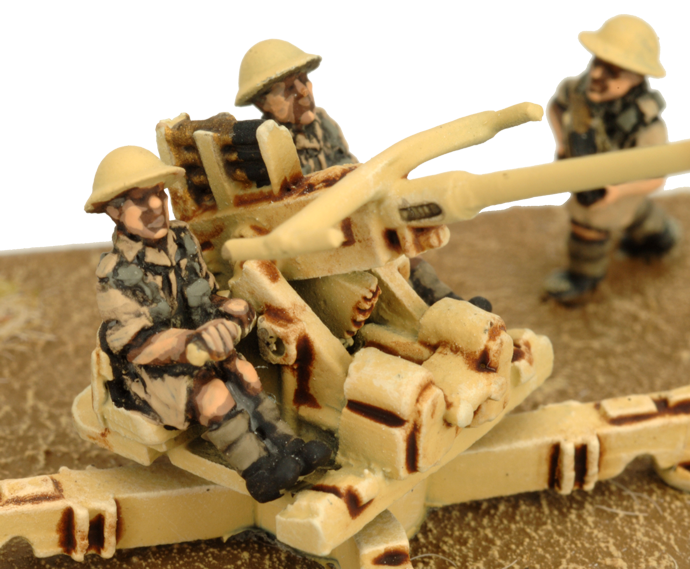
|
includes three metal Bofors anti-aircraft guns, three large six-hole bases, one base plug sprue and one Unit card. The open desert offers precious little cover from the Stuka dive-bombers of the Luftwaffe. The quick-firing Bofors guns can be relied on to drive away the harassing Axis aircraft before they have a chance to do too much harm. |
|
Armoured Fist The British Army has the Italian-German armies in Africa caught in a vice, and are steadily screwing the jaws shut. The Eighth Army is advancing from El Alamein in the east, while the First Army fights its way through Tunisia from the west. Their armoured divisions combine the dash of fast, light tanks like the Honey and Crusader, with the power of the heavy Grant and Sherman. Their infantry divisions have some of the toughest riflemen in the world, backed up by thickly-armoured Churchill and Valentine tanks and massed artillery. Together, they make up a force that can defeat anything the enemy brings against them, a force that will destroy the Axis forces in Africa. Learn more about Armoured Fist here... |
 |
 
|
|
|
||
|
The Bofors 40 mm gun, often referred to simply as the Bofors gun, is an anti-aircraft/multi-purpose autocannon designed in the 1930s by the Swedish arms manufacturer AB Bofors. It was one of the most widely used anti-aircraft systems during World War II. |
 |
 |
|
The British Army had first examined the weapon when they received a number of Polish-built examples in 1937 for testing. A licence was acquired and the original design modified to suit mass production as well as converting the measurements from metric to imperial. |
|
 |
 |
| The Bofors became the Army's standard light anti-aircraft weapon and by the end of the war factories in Britan, Canada and Australia had manufactured over 19,000. | |
 |
 |
| In British army service the Bofors found a highly specialised role: during the North Africa Campaign at the Second Battle of El Alamein, they were used to fire tracer horizontally to mark safe paths for units through the German minefields. This practice was further developed during operations in North-West Europe, where bursts of colour-coded tracer were used to define the axis of advance of the different formations in large-scale night attacks. | |
 |
 |
| The gun could fire up to 120 rounds per minute but in practice it was closer to 80-100 rounds per minute as the rounds were fed into the breech from four round clips which had to be replaced by hand. It's fearsome rate of fire and high velocity shell made it a useful improvised anti-tank weapon. | |
 |
 |
 |
| Contact the customer service team at customerservice@battlefront.co.nz if you have issues with any components. |
 |
| Bofors Light AA Troop Card (x1) | Plastic Bases |
 |
 |
 |
 |
|
 |
|

